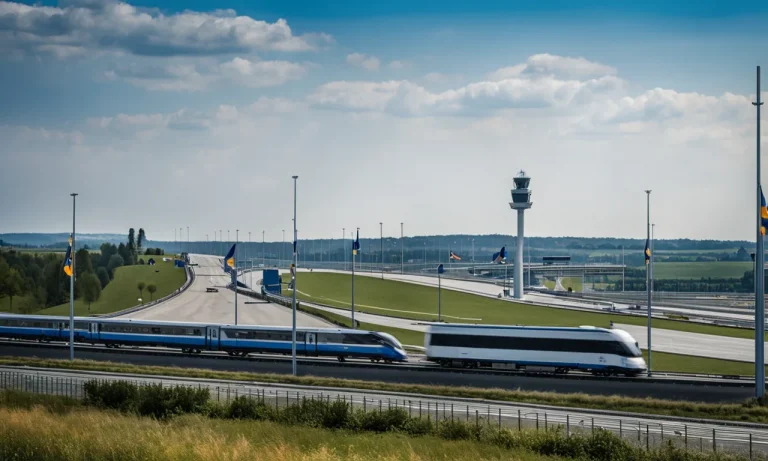Are There Still Lighthouse Keepers In 2023?
For centuries, lighthouses have served as beacons of light and hope for sailors navigating treacherous waters. The lonely sight of a lighthouse on a rocky cliff promised safety and shelter for those brave enough to traverse the seas.
If you’ve ever wondered whether these iconic structures are still being actively managed today, read on.
The quick answer is: Yes, there are still lighthouse keepers, but the role has changed quite a bit in modern times. Most lighthouses today are automated and monitored remotely, but there are still some keepers living and working onsite at lighthouses in the U.S. and around the world.
Brief History of Lighthouse Keeping
Lighthouse keeping has a rich and fascinating history that dates back centuries. In the early years, lighthouses were constructed to guide ships safely through treacherous waters and prevent them from running aground.
These towering structures served as beacons of hope for sailors, providing them with a sense of security and direction.
Origin and Early Years
The origins of lighthouse keeping can be traced back to ancient civilizations, such as the ancient Egyptians and Greeks, who used primitive forms of lighthouses to aid navigation. However, it was during the Roman era that lighthouse keeping truly began to take shape.
The famous Lighthouse of Alexandria, one of the Seven Wonders of the Ancient World, was manned by a team of keepers who maintained the light and ensured its efficient operation.
Throughout the Middle Ages, lighthouse keeping continued to evolve, with the establishment of more lighthouses along coastlines around the world. Keepers were responsible for lighting and extinguishing the lamps, cleaning the lenses, and maintaining the overall structure.
It was a demanding and often isolated job, requiring dedication, skill, and a deep understanding of maritime navigation.
Automation and Decline of Live-in Keepers
With advancements in technology and the development of automated systems, the need for live-in lighthouse keepers gradually declined. The introduction of electric lights, timers, and remote monitoring systems made it possible to operate lighthouses with minimal human intervention.
This resulted in a significant decrease in the number of lighthouse keepers required to maintain these structures.
Today, most lighthouses are fully automated, with remote control systems and solar-powered lights. This means that live-in keepers are no longer necessary for the day-to-day operation of these beacons.
However, there are still a few lighthouses around the world that maintain a tradition of having keepers on-site. These dedicated individuals play a vital role in preserving the historical and cultural significance of these iconic structures.
While the number of lighthouse keepers may have dwindled over the years, their legacy lives on. Their commitment to ensuring the safety of sailors and their dedication to maintaining these architectural masterpieces should be celebrated and remembered.
Lighthouse keeping may have evolved, but the spirit of those who once tended to these beacons continues to shine bright.
Lighthouses With Live-in Keepers Today
While the role of lighthouse keepers has significantly diminished over the years due to advancements in technology, there are still a few lighthouses around the world that have live-in keepers in 2023.
These dedicated individuals ensure the smooth operation and maintenance of these historic structures, keeping the maritime tradition alive.
U.S. Lighthouses
In the United States, several lighthouses still have live-in keepers who diligently carry out their responsibilities. One such example is the Pigeon Point Lighthouse in California. This picturesque lighthouse, built-in 1871, is recognized as one of the tallest lighthouses on the West Coast.
It continues to be maintained and operated by dedicated keepers who reside on-site.
Another notable example is the Seguin Island Lighthouse in Maine. This historic lighthouse, established in 1795, is the second oldest in Maine and is listed on the National Register of Historic Places.
It is manned by a resident keeper who performs regular maintenance tasks and provides guided tours to visitors.
These live-in keepers play a vital role in preserving the rich maritime history of the United States and ensuring the safety of seafarers navigating the coastlines.
International Lighthouses
Outside of the United States, there are also lighthouses in various countries that still have live-in keepers. One such example is the Fastnet Rock Lighthouse in Ireland. Situated on a rugged rock in the Atlantic Ocean, this lighthouse has been guiding ships since 1854.
It is currently operated by Irish Lights, with resident keepers responsible for its maintenance and operation.
In Scotland, the remote and picturesque Eilean Glas Lighthouse on the Isle of Scalpay is another example of a lighthouse with live-in keepers. This lighthouse, built-in 1824, is surrounded by stunning natural beauty and is maintained by dedicated keepers who reside on the island.
These international lighthouses with live-in keepers serve as important beacons of light, guiding ships and boats safely through treacherous waters.
It is important to note that the number of lighthouses with live-in keepers has significantly declined over the years, with many lighthouses now being automated. However, the few remaining lighthouses with resident keepers continue to captivate visitors with their historical significance and the dedication of those who maintain them.
Duties and Challenges of Modern Keepers
Typical Tasks
Although the role of lighthouse keepers has evolved over the years, there are still important tasks that they carry out in the modern era. One of the primary responsibilities of a lighthouse keeper is to ensure the smooth functioning of the lighthouse and its associated equipment.
This includes regular maintenance of the light, fog signals, and other navigational aids. They are also responsible for monitoring weather conditions and updating maritime charts with relevant information.
In addition to their technical duties, lighthouse keepers also play a crucial role in maintaining the safety and security of the lighthouse premises. They may be responsible for conducting regular inspections, managing access to the site, and ensuring that safety protocols are followed.
Furthermore, keepers often act as the point of contact for any emergencies or distress signals received from nearby vessels, providing assistance and coordinating rescue operations if necessary.
Moreover, lighthouse keepers are often involved in visitor management and education. They may offer guided tours to the public, sharing the history and significance of the lighthouse. This helps to raise awareness about maritime heritage and promote tourism in the area.
Pros and Cons of the Job
Being a lighthouse keeper comes with its own set of unique challenges and rewards.
- Pros: One of the main advantages of the job is the opportunity to live in stunning coastal locations, surrounded by breathtaking views. Lighthouse keepers often enjoy a tranquil and picturesque working environment that many people can only dream of.
Additionally, the role offers a sense of purpose and responsibility, as keepers play a vital role in ensuring the safety of seafarers and maintaining navigational aids.
- Cons: On the flip side, the job of a lighthouse keeper can be demanding and isolated. Keepers often have to work long hours, including night shifts, to ensure the lighthouse operates 24/7. The remote nature of many lighthouses means that keepers may have limited access to amenities and social interaction.
This can be challenging for those who value a bustling city life or have difficulty coping with solitude. Furthermore, the advancement of technology has led to automated lighthouses, reducing the need for human keepers in some areas.
Future of Lighthouse Keeping
Increasing Automation
With advancements in technology, the role of lighthouse keepers has evolved significantly in recent years. Automation has played a major role in reducing the need for human intervention in lighthouse operations.
In fact, many lighthouses around the world have already been automated, with sophisticated systems taking over the tasks once performed by keepers.
Modern lighthouses are equipped with state-of-the-art technology, including automatic lights, sensors, and remote monitoring systems. These systems can detect changes in weather conditions, monitor ships’ movements, and adjust the intensity of the light accordingly.
They also provide real-time information to maritime authorities, ensuring the safety of ships and their crew.
While the automation of lighthouses has undoubtedly improved efficiency and safety, it has also raised concerns about the future of lighthouse keepers. With the majority of lighthouses now operating autonomously, the need for human presence on site has diminished.
However, it is worth noting that some lighthouses still require occasional maintenance and repairs, which may necessitate the presence of keepers.
Furthermore, the role of lighthouse keepers has expanded beyond traditional duties. In addition to maintenance work, they now focus on visitor management, historical preservation, and educational outreach.
This diversification of responsibilities ensures that lighthouses continue to be valued as cultural landmarks and tourist attractions, even in the face of automation.
Preserving History and Tradition
Despite the increasing automation of lighthouses, the preservation of history and tradition remains a crucial aspect of lighthouse keeping. Lighthouses have a rich maritime heritage and serve as reminders of the past.
They often hold historical significance and contribute to the cultural identity of coastal communities.
Lighthouse keepers play a vital role in preserving this heritage. They are responsible for maintaining the lighthouse structures, ensuring that they remain in good condition for future generations. They also work closely with historical societies, local authorities, and preservation organizations to protect and promote the cultural significance of lighthouses.
Additionally, lighthouse keepers serve as ambassadors, sharing their knowledge and passion for lighthouses with visitors. Through guided tours and educational programs, they provide insights into the history, technology, and significance of these iconic structures.
Their enthusiasm and expertise contribute to a deeper understanding and appreciation of lighthouses among the general public.
It is important to note that while the number of lighthouse keepers may have decreased, their role in preserving history and tradition should not be underestimated. Their dedication ensures that lighthouse keeping continues to thrive as a respected profession, even in the era of automation.
Conclusion
While lighthouse keeping has changed dramatically from its early days, there are still dedicated individuals who choose to live onsite and care for historic beacons around the world. The legacy of lighthouse keepers lives on through their commitment to preserving maritime safety and stories of the past.
Though automation has taken over the operation of most lights, the human presence at some iconic lighthouses connects us to ancient traditions of the sea.







